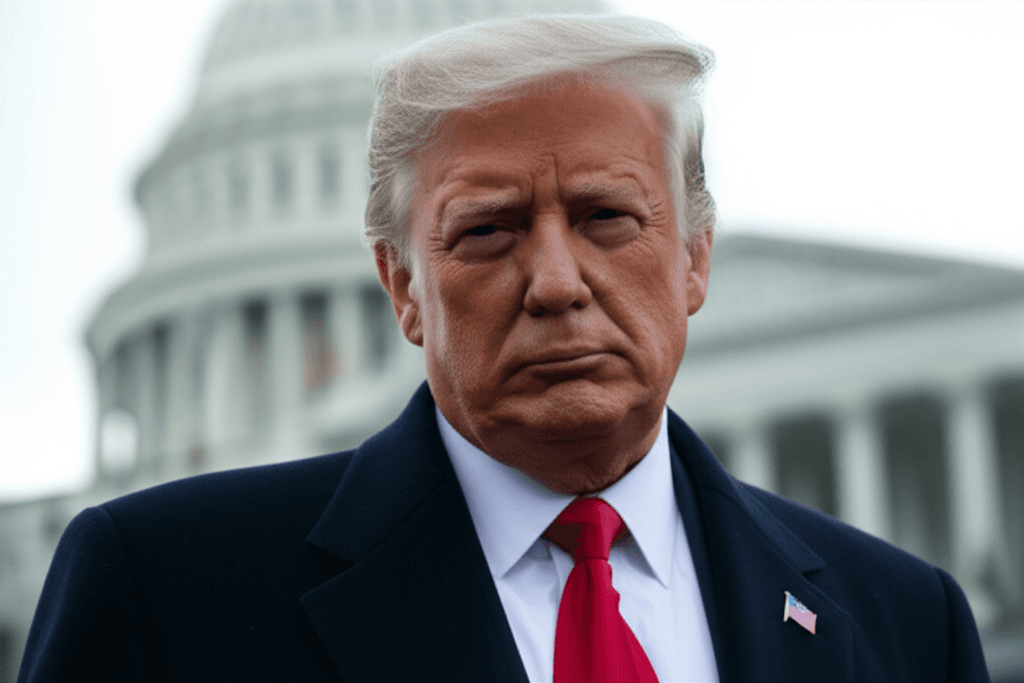Donald Trump - President of USA

Donald Trump's presidency was a period of significant change and bold policies, leaving behind a complex legacy that continues to be debated. This blog post aims to explore some of the key initiatives and accomplishments attributed to his administration, offering a balanced look at the arguments made in their favor. Join us as we delve into the policies and actions that supporters highlight as evidence of a positive impact on the United States.
Economic Growth and Tax Cuts: Fueling the Economy
One of the cornerstones of Donald Trump's presidency was his focus on stimulating economic growth. His administration implemented significant tax cuts, most notably through the Tax Cuts and Jobs Act of 2017.
The Tax Cuts and Jobs Act: A Deep Dive
This landmark legislation drastically lowered the corporate tax rate from 35% to 21%. Proponents argued this would incentivize businesses to invest more in the United States, create jobs, and boost wages. They also pointed to individual tax cuts that, at least initially, provided relief to many American families.
Key Arguments in Favor:
- Increased Business Investment: Lower corporate taxes were predicted to free up capital for businesses to expand operations, invest in research and development, and hire more employees.
- Job Creation: The administration claimed the tax cuts would lead to significant job growth across various sectors.
- Wage Growth: Proponents argued that increased business profits would eventually translate into higher wages for workers.
Real-world examples often cited:
- Increased small business optimism following the tax cuts.
- Periods of low unemployment during Trump's presidency.
Deregulation: Streamlining Business Operations
Beyond tax cuts, the Trump administration aggressively pursued deregulation across various sectors. This involved rolling back environmental regulations, loosening financial regulations, and reducing bureaucratic hurdles for businesses.
Benefits of Deregulation (as argued by supporters):
- Reduced Costs for Businesses: Less stringent regulations lowered compliance costs, allowing businesses to operate more efficiently and invest in growth.
- Increased Energy Production: Deregulation in the energy sector aimed to boost domestic oil and gas production, leading to greater energy independence.
- Faster Project Approvals: Streamlining the approval process for infrastructure projects was intended to accelerate economic development.
Strengthening National Security and Border Control
National security was a paramount concern for the Trump administration. Policies focused on strengthening border control, increasing military spending, and taking a more assertive stance on foreign policy.
Border Security and Immigration Enforcement
One of the most prominent and controversial policies was the effort to strengthen border security along the U.S.-Mexico border. This included building a wall and increasing enforcement of immigration laws.
Arguments for Increased Border Security:
- Reducing Illegal Immigration: The aim was to deter illegal immigration and reduce the flow of undocumented individuals entering the country.
- Combating Crime: Supporters argued that stricter border control would help prevent drug trafficking, human smuggling, and other criminal activities.
- Protecting National Security: Increased security measures were also presented as necessary to protect the country from potential threats.
Strengthening the Military
The Trump administration advocated for increasing military spending and modernizing the armed forces. This was seen as essential for maintaining America's global leadership and deterring potential adversaries.
Justifications for Increased Military Spending:
- Maintaining Military Superiority: Investing in advanced weapons systems and technologies was seen as necessary to maintain the United States' military advantage.
- Deterrence: A strong military was argued to deter potential adversaries from engaging in aggressive actions.
- Supporting National Security Objectives: Increased military capabilities were seen as vital for achieving U.S. foreign policy goals.
Trade Negotiations and "America First"
The Trump administration adopted an "America First" approach to trade, seeking to renegotiate existing trade agreements and impose tariffs on imported goods.
Renegotiating Trade Agreements
The administration renegotiated the North American Free Trade Agreement (NAFTA), resulting in the United States-Mexico-Canada Agreement (USMCA).
Goals of Renegotiating NAFTA:
- Reducing the Trade Deficit: The aim was to reduce the trade deficit with Mexico and Canada and create a more level playing field for American businesses.
- Protecting American Jobs: Supporters argued the new agreement would protect American jobs and promote domestic manufacturing.
- Modernizing the Agreement: The USMCA included provisions to address issues such as digital trade and intellectual property rights.
Imposing Tariffs
The Trump administration imposed tariffs on steel, aluminum, and other goods imported from various countries, including China.
Rationale for Tariffs:
- Protecting Domestic Industries: Tariffs were intended to protect American steel and aluminum producers from foreign competition.
- National Security: The administration argued that domestic production of steel and aluminum was essential for national security.
- Trade Negotiations Leverage: Tariffs were used as leverage in trade negotiations with other countries to address unfair trade practices.
Conclusion: A Legacy of Change
Donald Trump's presidency was marked by significant policy changes across various sectors. While controversial, many of these policies were lauded by supporters for their positive impact on the economy, national security, and trade. Exploring these accomplishments, as perceived by those who supported his administration, is crucial for understanding the complexities and lasting effects of his time in office. It is important to consider the perspectives of both proponents and critics to develop a comprehensive understanding of his legacy.


